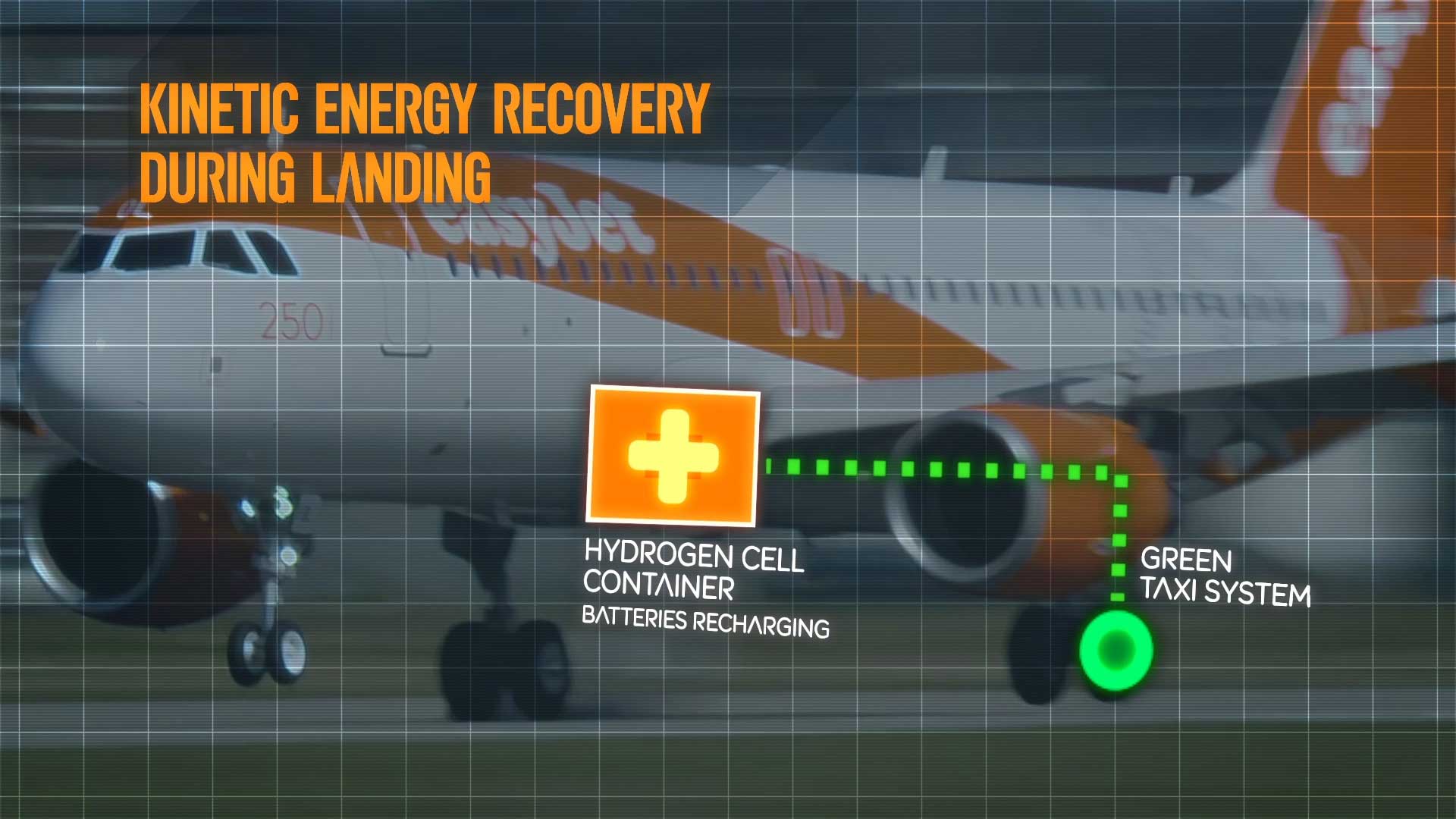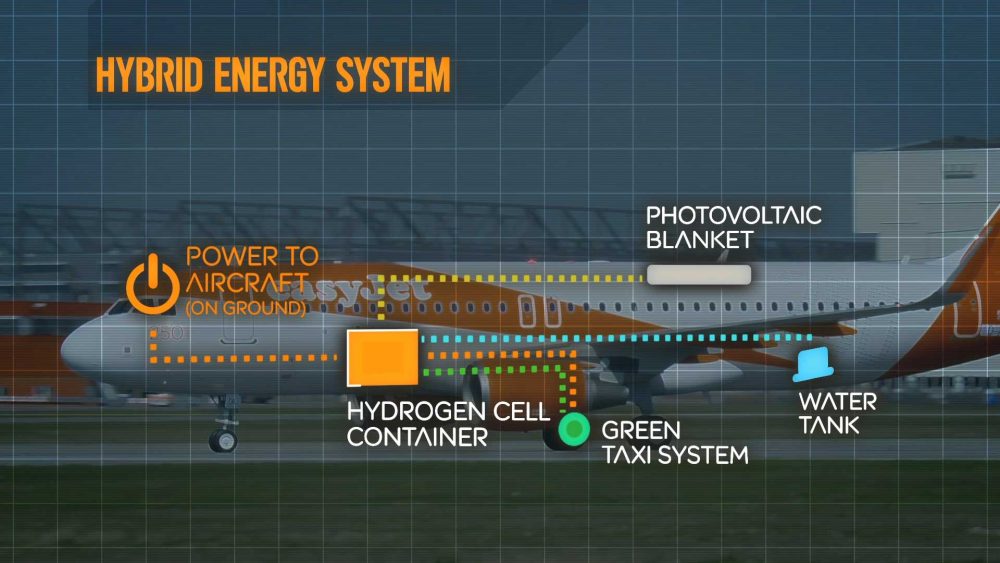easyJet has unveiled plans for a revolutionary zero emissions hydrogen fuel system for its aircraft which could save around 50,000 tonnes of fuel and associated CO2 emissions a year.
The system would use electricity to taxi the aircraft at airports instead of the jet engines, estimated to add up to 4% of the total fuel used on a flight.
The hybrid plane concept utilises a hydrogen fuel cell stowed in the aircraft’s hold. This innovative zero-emissions system allows energy to be captured as the aircraft brakes on landing and is used to charge the system’s lightweight batteries when the aircraft is on the ground (much like the Kinetic Energy Recovery System (KERS) found in Formula 1 cars).

As the aircraft brakes during rollout after landing, the energy recovery system would charge the aircraft’s batteries via the hydrogen cell.
Each aircraft would have motors in the main wheels. Electronics and system controllers would give pilots total control of the aircraft’s speed, direction and braking during taxi operations. The system would therefore reduce, if not remove altogether, the need for tugs to manoeuvre aircraft in and out of stands, delivering more efficient turnaround times and increased on-time performance.
The only waste product is fresh clean water which could be used to refill the aircraft’s water system throughout the flight.
Future of Flight competition
The concept has been developed by easyJet’s engineering director Ian Davies and his team working with students from Cranfield University, who took part in a Future of Flight competition.
Davies said, “At easyJet, we are continuing to apply the use of new digital and engineering technologies across the airline.
“The hybrid plane concept we are announcing today is both a vision of the future and a challenge to our partners and suppliers to continue to push the boundaries towards reducing our carbon emissions.
“It’s also a great example of the benefits of our strategic relationship with Cranfield University.”
Dr. Craig Lawson, Lecturer, Centre for Aeronautics, Cranfield University, added:
“We are delighted to be working on this project with easyJet on what is a real-world example of how we can innovate together.
“Cranfield is a specialist postgraduate university providing advanced, practical education and research. We are recognised internationally as meeting the needs of business, governments and wider society.
“Our students have showcased some exciting ideas for the 2035 vision of the airline industry through The Future of Flight competition, presenting environmental solutions, operational improvements and ideas to enhance the customer experience. We’re looking forward to developing this concept further.”
easyJet and Cranfield University signed a three-year strategic partnership agreement last year to share innovation and knowledge.
As part of easyJet’s 20th birthday activities, students at Cranfield University were asked to compete in four categories: cabin design, aircraft design, airport experience and in-flight experience.
Judges at easyJet and Cranfield received a raft of pioneering advances from the aerospace students. Further innovative ideas included dynamic wings which change shape in flight, a super-efficient ‘shark skin’ coating to reduce surface drag and, in the cabin, ultra-lightweight seats incorporating wireless phone and tablet charging panels.
The easyJet system is different from the electric taxi concept being worked on by Airbus, Honeywell and Safran which uses electricity generated by the aircraft’s auxiliary power unit.
Cranfield University













